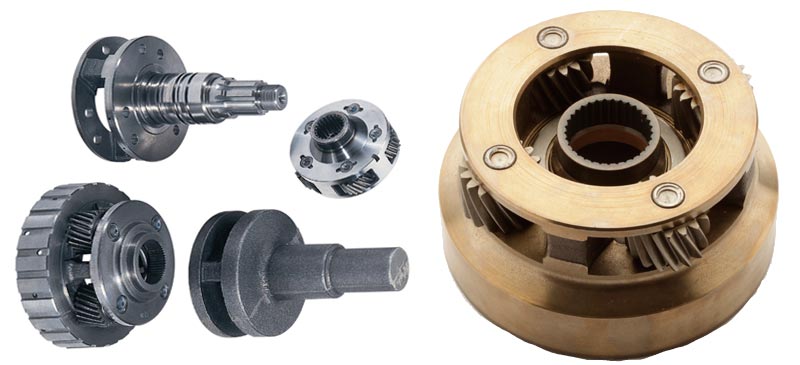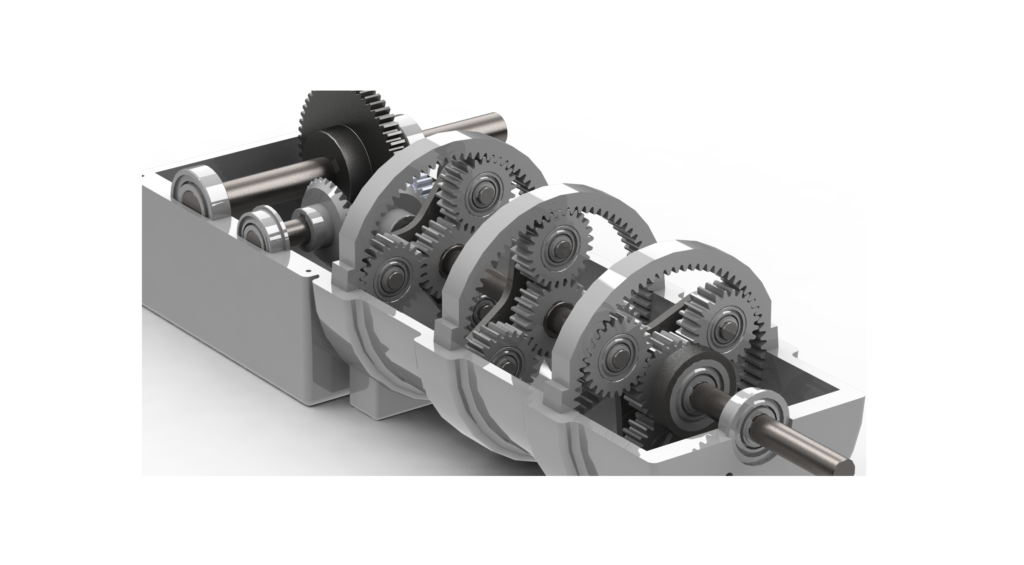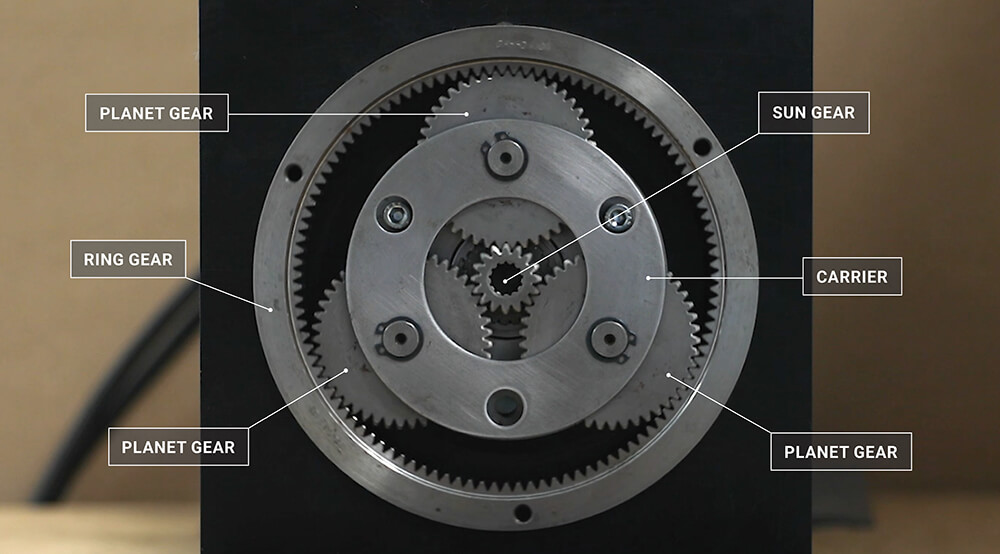Product Description
Nylon Plastic Planetary Transmission Spur Gear
Product Description
|
Mold Material |
Aluminum,45#, P20, H13, 718, 1.2344, 1.2738 and so on |
|
Plastic Material |
PC/ABS, ABS, PC, PVC, PA66, POM or other you want |
|
silicon rubber Material |
NR, NBR, SBR, EPDM, IIR, CR, SILICONE, VITON,etc |
|
Plastic Surface finish |
Polishing finish,Texture Finish,Glossy Finish,Painting,Slik print,Rubber Painting etc |
|
Drawing format |
IGES, STEP, AutoCAD, Solidworks, STL, PTC Creo, DWG, PDF, etc.. |
|
The Way of Color Contrast for Plastic |
RAL PANTONE |
|
Certificated |
ISO 9001:2015 Certificated, SGS Certificated |
|
Service Project |
To provide production design, production and technical service, mould development and processing, product assembly and packaging,etc |
Our Services
1.Product Design,Structural Optimization,Process Optimization
2.Mold Making,Plastic Molding Parts,Casting Parts,Machining Part
3.Manage Project,Control The Delivery and Quality of Products
4.Arranging the Transportation,Customs Clearance and other Matters for You.
We can offer the full range of service from mold designing, making, plastic part molding to printing, assembly, package, and shipping arrangement.
In the service of plastic injection, we are more than just an injection molder.
We provide solutions to manufacturing from start to finish.
Our expertise enables us to provide clients with superior product by providing the
highest quality in design, development, and solutions for precision injection molding and related manufacturing.
We have over 10 years production experience.
Custom Plastic Injection Molding Services
Precision Plastic Injection Molding Services
We offers comprehensive custom plastic injection molding services to a wide range of industries. From low volume work to high volume production runs, we have the expertise and facilities to meet our customers’ contract manufacturing needs. We offer 2 shot, sandwich and insert injection molding as well as micro and gas assist molding. We have both 10K and 100K clean room manufacturing facilities for those customers in the medical, pharmaceutical, food, beverage and electronics industries. Our comprehensive plastic injection molding abilities include machines with clamping forces from 18 to 3,000 tons, allowing us to produce nearly any plastic part including micro parts, thin-walled parts, and large components that require multiple shots.
Advantages:
1. Competitive price.
2. Strict quality control system.
3. Quick mold making and delivery.
4. Advanced equipment, excellent R&D teams.
5. Professional technicians and rich experienced workers.
Quality First,Price Best,Service Foremost!
We assure you of our best services at all times!
Q1. What’s your main business?
A1: We are mainly making plastic injection moulding parts.
Q2. Are you a trading company or manufacturer?
A2: We are a manufacturer with foreign trade experience.
Q3. What types of files(drawings) do you accept?
A3: With our cad systems we can take the following files in:.STP / .IGS / .DXF / .DWG / .PPT / .STL /
.X_T / .CATIA / UG files, etc..
Q4. Can you Provide OEM?
A4: Yes,we can provide OEM service.
Q5. If make the molds for us,will you disclose our files?
A5: All the files are confidential, we can CHINAMFG the NDA first when required.
Q6. Do you provide design service? I have an idea for a new products,but I don’t know whether it can be realized.
Can you help?
A6: Definitely ok. Our R&D department will help you design the idea to be realized with extensive technical
supports.
Q7. Do you have after-sales service?
A7: Yes,we will provide technical supports with 7×24 hours.
Q8. If I decide to go ahead with my project, how long will it take to get the trial samples?
A8: 3-6 weeks depends on the part construction.
Q9. How about your facilities?
A9: 8 sets sodick EDM, 9 mirror EDM, 8 high speed cnc.
You can look through our website to find your interest or email your any questions through
below approach! We will reply to you within 12 hours.
| Material: | ABS |
|---|---|
| Application: | Medical, Household, Electronics, Automotive, Agricultural |
| Certification: | TS16949, RoHS, ISO |
| Samples: |
US$ 5/Piece
1 Piece(Min.Order) | Order Sample plastic part
|
|---|
| Customization: |
Available
| Customized Request |
|---|
.shipping-cost-tm .tm-status-off{background: none;padding:0;color: #1470cc}
|
Shipping Cost:
Estimated freight per unit. |
about shipping cost and estimated delivery time. |
|---|
| Payment Method: |
|
|---|---|
|
Initial Payment Full Payment |
| Currency: | US$ |
|---|
| Return&refunds: | You can apply for a refund up to 30 days after receipt of the products. |
|---|

How do you calculate the gear ratio involving sun, planet, and ring gears?
The gear ratio in a planetary gear system can be calculated by considering the number of teeth on the sun gear, planet gears, and ring gear. The gear ratio determines the relationship between the input speed and the output speed of the system. Here’s how you can calculate the gear ratio:
- Step 1: Count the Teeth:
Count the number of teeth on the sun gear (S), the planet gears (P), and the ring gear (R). These numbers represent the respective gear’s tooth count.
- Step 2: Determine the Gear Arrangement:
Identify the gear arrangement. In a simple planetary gear system, the sun gear is at the center, surrounded by planet gears, and enclosed by the ring gear.
- Step 3: Calculate the Gear Ratio:
The gear ratio (GR) can be determined using the formula:
GR = (R + P) / S
Where:
- R represents the number of teeth on the ring gear
- P represents the number of teeth on the planet gears (assuming they have the same number of teeth)
- S represents the number of teeth on the sun gear
The resulting gear ratio represents the speed relationship between the input and output of the planetary gear system. A gear ratio greater than 1 indicates a speed reduction, while a gear ratio less than 1 indicates a speed increase.
It’s important to note that in more complex planetary gear systems, where there are multiple sets of planet gears or additional gears, the calculation of the gear ratio may involve considering multiple gear stages and their respective tooth counts.
In summary, to calculate the gear ratio involving sun, planet, and ring gears, you need to count the teeth on each gear and use the formula (R + P) / S, where R is the number of teeth on the ring gear, P is the number of teeth on the planet gears, and S is the number of teeth on the sun gear. This calculation provides the gear ratio that defines the speed relationship between the input and output of the planetary gear system.

Can you explain the process of gear shifting in planetary gear systems?
Gear shifting in planetary gear systems involves changing the gear ratio by engaging or disengaging specific components of the gear set. Let’s explore the process of gear shifting in more detail:
- Clutching and Braking:
The gear shifting process in planetary gear systems primarily relies on clutching and braking mechanisms. These mechanisms selectively connect or disconnect various gears within the system to achieve the desired gear ratio. Here are the key steps involved:
- Clutch Engagement:
To shift to a higher gear ratio, the clutch associated with the gear component that needs to be engaged is activated. The clutch connects the rotating member, such as the sun gear, planet carrier, or ring gear, to the stationary member, allowing torque transmission. This engagement results in a change in the gear ratio, leading to higher speed or torque output depending on the specific gear set configuration.
- Brake Application:
On the other hand, to shift to a lower gear ratio, a brake associated with the gear component that needs to be disengaged is applied. The brake immobilizes or slows down the rotation of the selected gear element, preventing it from transmitting torque. By selectively braking certain components, the gear ratio is altered, resulting in a lower speed or higher torque output.
- Sequential Shifting:
In some planetary gear systems, gear shifting is performed sequentially. This means that one gear component is engaged or disengaged at a time, gradually transitioning from one gear ratio to another. Sequential shifting allows for smooth and controlled gear changes, minimizing the stress on the transmission components and ensuring seamless power transmission.
- Electronic Control:
In modern applications, gear shifting in planetary gear systems is often electronically controlled. Electronic control systems utilize sensors, actuators, and a control unit to monitor various parameters such as vehicle speed, engine load, and driver input. Based on these inputs, the control unit determines the optimal gear shift points and actuates the clutches and brakes accordingly. Electronic control enhances the efficiency, precision, and automation of the gear shifting process.
In summary, gear shifting in planetary gear systems involves the engagement and disengagement of clutches and brakes to alter the gear ratio. By selectively connecting or disconnecting specific gear components, the speed and torque output can be adjusted. Sequential shifting and electronic control systems further enhance the gear shifting process, providing smooth and efficient operation in various applications, including automotive transmissions and industrial machinery.

How do planetary gears differ from other types of gear arrangements?
Planetary gears, also known as epicyclic gears, possess unique characteristics and differ from other types of gear arrangements in several ways. Let’s explore the distinguishing features of planetary gears:
- Internal Gear Meshing:
Unlike other gear arrangements where the gears typically mesh externally, planetary gears have internal gear meshing. This means that the gear teeth of the sun gear, planet gears, and ring gear are located on the inside surfaces, allowing for compact and space-efficient designs.
- Multiple Gear Sets:
Planetary gear systems consist of multiple gear sets working in parallel or series. These gear sets include the sun gear, planet gears, and ring gear. By combining and configuring these gear sets, different gear ratios and torque distributions can be achieved, providing versatility and flexibility in various applications.
- Central Sun Gear:
A distinctive feature of planetary gears is the presence of a central sun gear. The sun gear is typically driven by an input source, such as a motor or engine. It is located at the center of the gear arrangement and serves as the primary driver for overall gear operation.
- Orbiting Planet Gears:
In planetary gears, the planet gears rotate on their own axes while simultaneously orbiting around the sun gear. This combination of rotational and orbital movement allows for efficient torque transmission and enables the gear arrangement to achieve different gear ratios based on the relative sizes and positions of the gears.
- Compact Size:
One of the key advantages of planetary gears is their compact size. The internal gear meshing and the arrangement of multiple gear sets within a single gear system contribute to their space-saving design. This makes planetary gears suitable for applications where size and weight restrictions are important considerations.
- Wide Range of Applications:
Planetary gears find applications in various industries and mechanical systems. They are commonly used in automotive transmissions, industrial machinery, robotics, aerospace systems, and more. Their ability to achieve different gear ratios, transmit torque efficiently, and operate in compact spaces makes them versatile solutions in diverse engineering applications.
In summary, planetary gears differ from other types of gear arrangements due to their internal gear meshing, multiple gear sets, central sun gear, orbiting planet gears, compact size, and wide range of applications. These characteristics make planetary gears suitable for achieving various gear ratios, transmitting torque efficiently, and meeting the space requirements of different mechanical systems.


editor by CX 2023-11-02